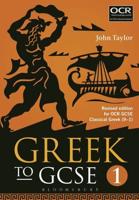Publisher's Synopsis
Buddhism Under the Tang is a history of the Buddhist Church during the T'ang dynasty (618-907), when Buddhist thought reached the pinnacle of its development. The three centuries spanned by the T'ang saw the formation of such important philosophical schools as the Fa-hsiang and Hua-yen, the consolidation of the T'ien-t'ai school, the introduction of Esoteric Buddhism from India, and the emergence of the Pure Land and Chan schools as the predominant expressions of Buddhist faith and practice. Professor Weinstein draws extensively upon both secular and ecclesiastical records to chronicle the vicissitudes of the Buddhist Church. The main focus is on the constantly changing relationship between the Buddhist Church and the T'ang state. Among the topics discussed in detail are the various attempts to curb the power of the Buddhist monasteries, the governance of the Buddhist clergy, the use of Buddhism to promote secular political ends, and the violent suppression of Buddhism by Emperor Wu (840-846) and its formal restoration under the last T'ang emperor.










